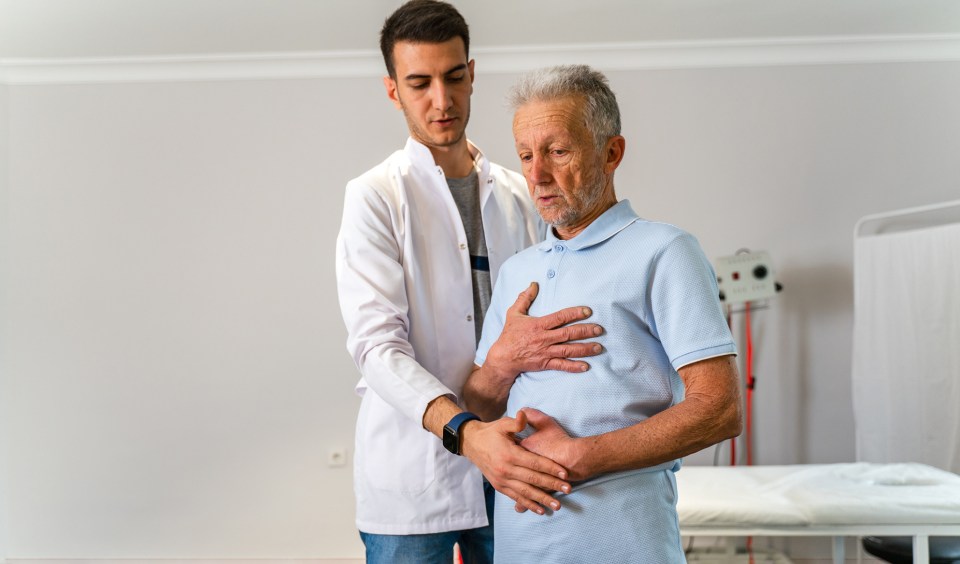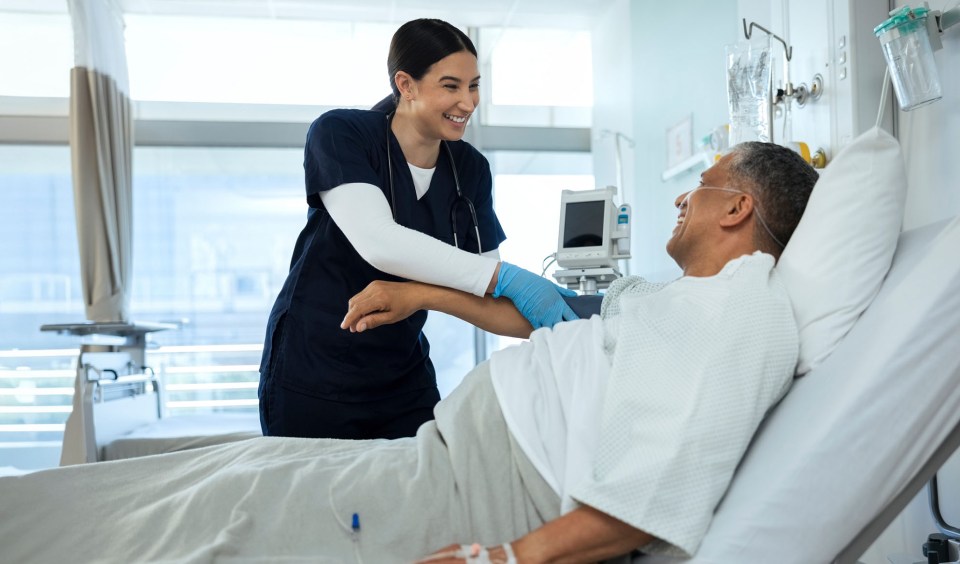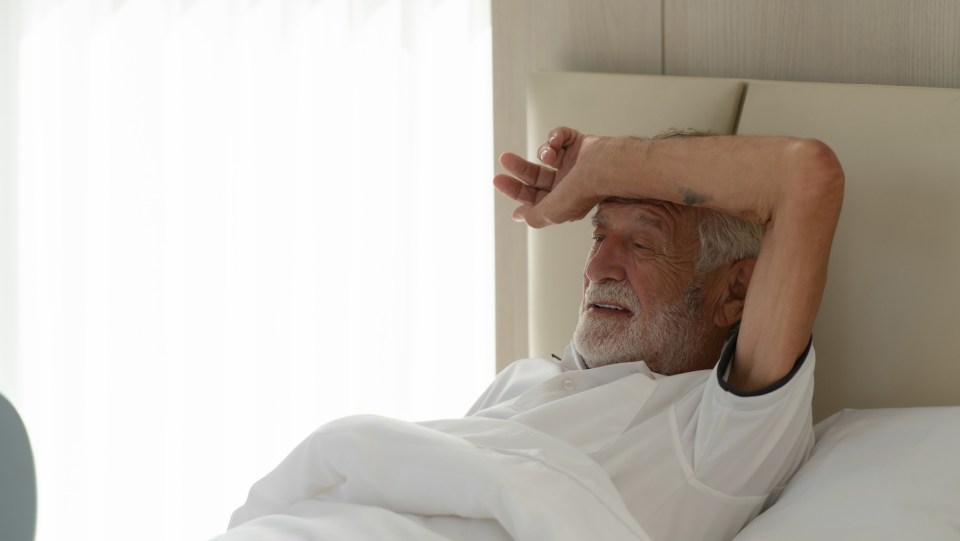Breathing is a natural action that we cannot do without. The essential act of breathing correlates with well-being and can improve body mechanics, movement and cognitive functioning.
If a patient is struggling with breathing, they are likely also struggling with their daily activities.
Decreased independence in activities of daily living (ADLs) is associated with a decreased quality of life, increased healthcare costs and a higher chance of death. Impaired ADL performance is also correlated with increased admissions to skilled nursing and long-term care facilities.
Because of this, occupational therapy professionals should consider incorporating breathing techniques into their patients’ treatment, especially for older patients in the inpatient rehabilitation setting of care. These techniques can reduce pain, anxiety and depression and can enhance sleep quality, all of which improve a patient’s ability to perform daily tasks and live safely and more independently.
Breathing and ADLs
Breathing exercises, such as slow, deep breathing and focusing on each breath can change a patient’s cardiovascular and brain functions, which could improve movement and mental health.
These techniques can be incorporated into occupational therapy sessions to promote increased active participation with ADLs. Breath control can improve posture and facilitate effective and safe transitional movements.
Transitional movement and breathing should be coordinated and must complement each other or the movement will become dysfunctional. When a patient isn’t breathing properly, body systems can become competitive rather than complementary.
Treating the pulmonary and neuromotor systems interactively will maximize the coordination and successful function of both.
When a patient holds their breath to maintain a posture, they may be unable to perform transitional movement because the two are in conflict. Breath-holding and the loss of adaptable, dynamic control contributes to inefficient movement and a loss of independence. It also puts patients at an increased risk of falls.
Interventions for the patient who holds their breath during movement should focus on how and why the patient started doing this in the first place. Treatment strategies should combine ventilation and neuromotor systems to promote synchronization of the two. The function of one system can be used to enhance the function of the other for optimal functional movement and outcomes.
Breath Control and Nonpharmacological Pain Management
It is essential for occupational therapy professionals to educate patients on proper breath control and breathing techniques as a way to reduce pain and increase mobility.
Multiple strategies, including modification of body position in combination with pursed lip breathing (PLB), can be used during rehabilitation to relieve shortness of breath and reduce pain. This can be accomplished by having the patient place their hands or forearms on their thighs while seated in a forward trunk lean posture (FTLP).
This posture forces changes to muscle activation patterns, leading to a greater elevation of the rib cage and more synchronous movement between the thoracic and abdominal regions. The result is improved ventilation and a decrease in dyspnea, or shortness of breath. FTLP pushes the stomach toward the thoracic cavity placing the flattened diaphragm in a more favorable position for functional activity and mobility.
Breathing techniques can also be incorporated into daily living to reduce pain and increase participation in daily activities. Breath control is an effective and meaningful way to reduce stress and anxiety levels to enhance quality of life.
Nonpharmacological pain management and breathing techniques can assist in treating other symptoms that often come with pain, such as tension, difficulty concentrating and irritability. They can also reduce the emotional components of pain and strengthen coping abilities.
Behavioral approaches involving breathing techniques that can help reduce pain levels include:
- Slow-Rhythmic Breathing. This is a relaxation technique that can be taught quickly and is effective in decreasing anxiety and managing pain. In a quiet space, have the patient slowly breathe in and out, releasing their anxiety and relaxing a little more with each breath.
- Relaxation training. Relaxation techniques include breathing exercises, yoga, meditation, guided imagery, prayer, Tai Chi, diaphragmatic breathing, mindfulness and/or progressive muscle relaxation (PMR). A relaxation method can be taught in a short time, but it is better to guide the patient through the technique a few times to instill confidence in the strategy. Once learned, these techniques can be used in any setting.
- Progressive Muscle Relaxation (PMR). During progressive muscle relaxation training, patients concentrate on the contraction and relaxation of a skeletal muscle group, temporarily reducing their attention to pain and anxiety. You can have the patient start at the top of their head, smoothing out the muscles in their forehead and work their way down their body, ending with their feet and toes.This will help the muscles to relax, reduce tension and decrease body stiffness.
- Diaphragmatic Breathing. Also known as belly breathing, diagragmatic breathing uses the diaphragm and abdominal muscles to inhale slowly through the nose and exhale slowly through the mouth. It promotes mindfulness, relaxation and warming of the extremities.
Breath Control and Sleep Hygiene
Sleep hygiene is anything that facilitates or interferes with sleep. Poor sleep hygiene is one of the primary factors of sleep deprivation in the hospital setting. Lack of sleep can have significant consequences that affect overall health, well-being, mobility and functional performance.
Many of the habits and practices that are conducive to a good night’s sleep are also essential in preserving a patient’s overall health. Sleep deprivation in hospitalized patients may result in:
- Delayed wound healing
- Worsening of pain
- Worsening cardiorespiratory status and/or psychiatric health
- Weakened immune system
- Increased insulin resistance
- Increased risk of fall incidents
- Delirium
- Longer length of stay
- Extended recovery times
- Increased medical costs
Effective interventions to promote sleep should include breath control and breathing techniques. This could include relaxation techniques, guided imagery, meditation, deep breathing and progressive muscle relaxation. Combining them with deep breathing helps to balance the sympathetic nervous system. Together, they can help relax the body, lower blood pressure and stimulate blood circulation and muscle relaxation, all of which can improve sleep.
Studies show that progressive muscle relaxation also significantly improves negative emotions, anxiety and depression, which can impact sleep quality. Educate patients on the importance of mind and body self-care to enhance their sleep. Provide information on the importance of sleep hygiene and breath control techniques, so they can get better quality of sleep, which in turn will help them get the most out of their therapy sessions.
References
Dobson, Linda, BSN, RN, Stutzman, Sonja, Hicks, Amber, Olson, DaiWai & PhD, RN. (2019). Sleep hygiene in patients with chronic respiratory disease. Nursing, 49, 64-69. https://doi.org/10.1097/01.NURSE.0000549722.07316.42
Massery M, Moerchen V. Coordinating transitional movements and breathing in patients with NDTA Network; 1996:1-7.
Nakamura, N. H., Oku, Y., & Fukunaga, M. (2023). “Brain-breath” interactions: respiration-timing-dependent impact on functional brain networks and beyond. Reviews in the neurosciences, 10.1515/revneuro-2023-0062. Advance online publication. https://doi.org/10.1515/revneuro-2023-0062
Pasero, Christine, BSN, RN, Smith, Nancy & BSN, RN. (1997). Using Breathing to Supplement Pain Control. AJN, American Journal of Nursing, 97(2), 16. Retrieved from http://ovidsp.ovid.com/ovidweb.cgi?T=JS&PAGE=reference&D=yrovftc&NEWS=N&AN=00000446-199702000-00011.
Schaffer, Susan, PhD, ARNP, Yucha, Carolyn & PhD, RN. (2004). Relaxation & Pain Management: The relaxation response can play a role in managing chronic and acute pain. AJN, American Journal of
Nursing, 104(8), 75-82. Retrieved from http://ovidsp.ovid.com/ovidweb.cgi?T=JS&PAGE=reference&D=yrovftg&NEWS=N&AN=00000446-200408000-00044.
Smallfield, Stacy, Fang, Lea & Kyler, Darby. (2021). Self-Management Interventions to Improve Activities of Daily Living and Rest and Sleep for Adults With Chronic Conditions: A Systematic Review. American Journal of Occupational Therapy, 75, 75041900101-750419001021. https://doi.org/10.5014/ajot.2021.046946
Ubolnuar, Nutsupa, PT, PhD, Tantisuwat, Anong, PT, PhD, Mathiyakom, Witaya, PT, PhD, PT, PhD. (2022). Effect of pursed-lip breathing and forward trunk lean positions on regional chest wall volume and ventilatory pattern in older adults: An
observational study. Medicine, 101, e28727. https://doi.org/10.1097/MD.0000000000028727
van den Ende, Eva, Merten, Hanneke, Van der Roest, Lisanne, Toussaint, Belle, van Rijn, Quirine, Keesenberg, Marjolein, Nanayakkara, Prabath. (2022). Evaluation of Nonpharmacologic Interventions and Sleep Outcomes in Hospitalized Medical and Surgical Patients: A Nonrandomized Controlled Trial. JAMA Network Open, 5, e2232623-. https://doi.org/10.1001/jamanetworkopen.2022.32623
Xiao, Chun-Xiu, Lin, Yan-Juan, Lin, Ren-Qin, Liu, An-Na, Zhong, Gui-Qin & Lan, Cai-Feng. (2020). Effects of progressive muscle relaxation training on negative emotions and sleep quality in COVID-19 patients: A clinical observational study. Medicine, 99, e23185. https://doi.org/10.1097/MD.0000000000023185
The content of this site is for informational purposes only and should not be taken as professional medical advice. Always seek the advice of your physician or other qualified healthcare provider with any questions you may have regarding any medical conditions or treatments.



